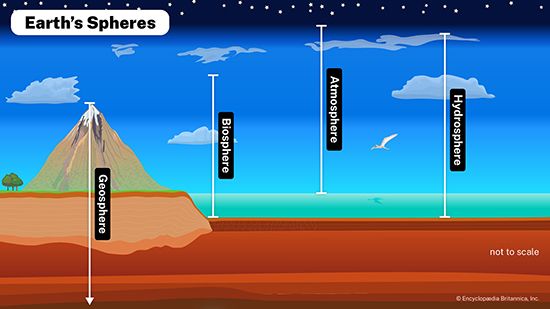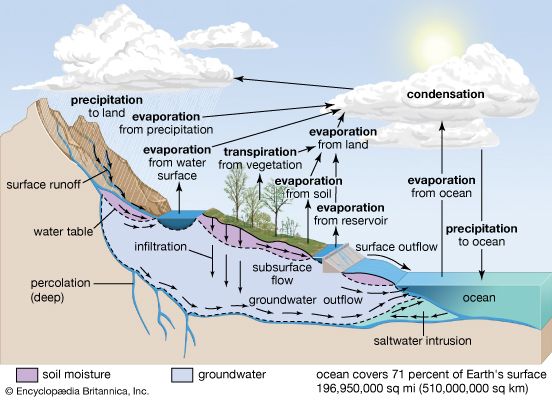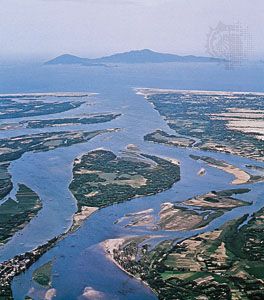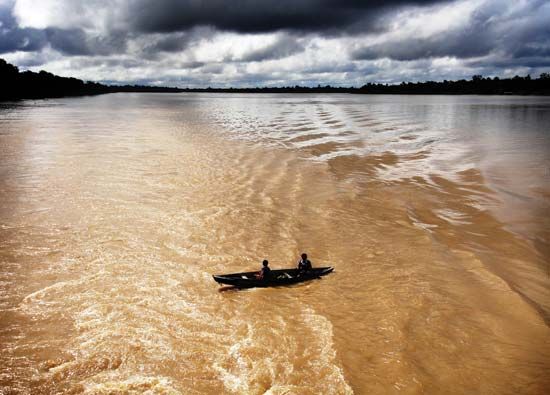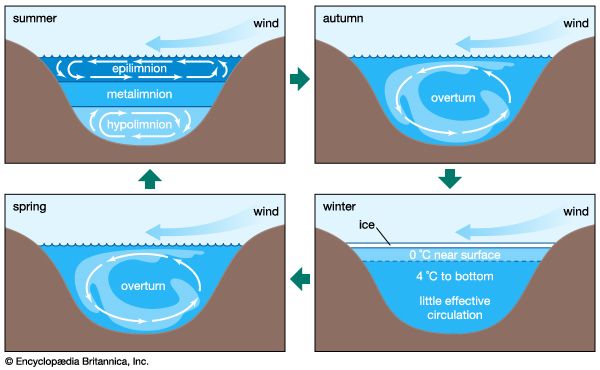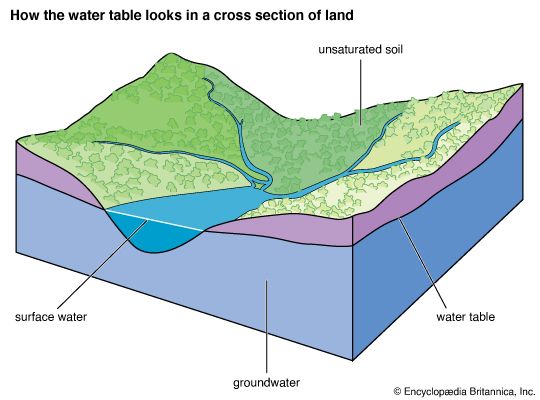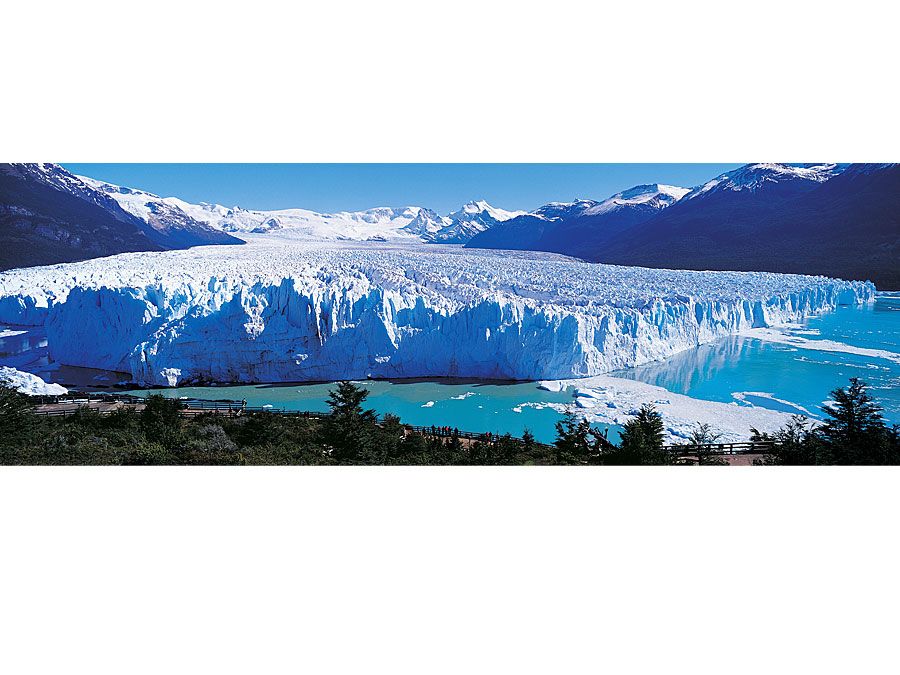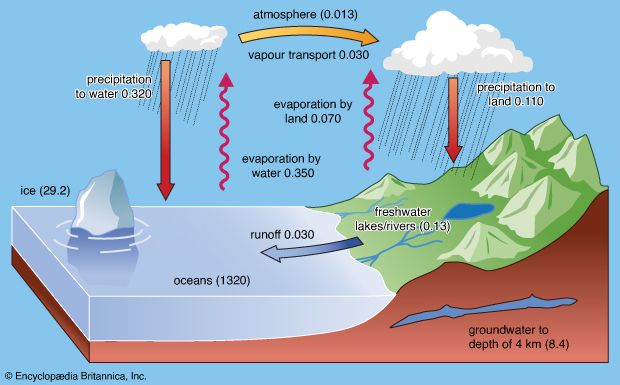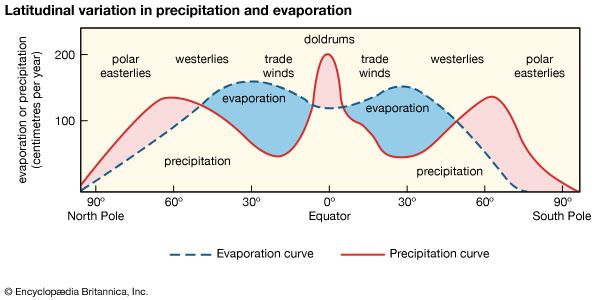Processes involved in the cycle
Our editors will review what you’ve submitted and determine whether to revise the article.
- Related Topics:
- lake
- seawater
- ocean current
- wave
- ocean
The water cycle consists of various complicated processes that move water throughout the different reservoirs on the planet. The major processes involved are precipitation, evaporation, interception, transpiration, infiltration, percolation, retention, detention, overland flow, throughflow, and runoff.
Water vapour and precipitation
As noted above, water exists in the atmosphere in gaseous form. Its liquid form, either as water droplets in clouds or as rain, and its solid form, as ice crystals in clouds, snowflakes, or hail, occur only momentarily and locally.
Water vapour performs two major functions: (1) it is important to the radiation balance of Earth, as its presence keeps the planetary surface warmer than would otherwise be the case, and (2) it is the principal phase of the ascending part of the water cycle.
The mass of water vapour in the atmosphere, which represents only 0.001 percent of the hydrosphere, is highest in the tropics and decreases toward the poles. At a mean temperature of Earth’s surface of 15 °C (59 °F), the partial pressure of water vapour at equilibrium with pure water is 0.017 atmosphere. The addition of salts to pure water lowers its vapour pressure. The equilibrium, or saturation, water vapour pressure of a saturated solution of sodium chloride is 22 percent lower than that of pure water. Precipitable water vapour has, on the average, a vapour pressure of 0.0025 atmosphere, which amounts to 15 percent of the saturation vapour pressure. The ratio of observed water vapour pressure to the saturation vapour pressure at the same temperature is the relative humidity of the air. Thus, the mean relative humidity of the atmosphere is only 15 percent, a value that is low in human terms, in which levels of 50 to 60 percent are preferred for maximum comfort. The relative humidity of the air, however, varies greatly from one geographic region to another and also vertically in the atmosphere. Atmospheric water vapour decreases rapidly with increasing altitude relative to its surface value. The amount of water required to saturate a volume of air depends on the temperature of the air. Air at high temperature can hold more water vapour at saturation than can air at low temperature. Because the temperature of the lower atmosphere (the troposphere) decreases rapidly with increasing altitude to about 15 km (about 9 miles), the upper levels of the troposphere contain little water vapour; most of the vapour is found within a few kilometres of Earth’s surface. The average relative humidity of tropospheric air is about 50 percent. Above 15 km, water vapour is essentially frozen out of the atmosphere, amounting to less than 0.1 percent of its concentration at Earth’s surface.
Aside from temperature, other factors determine the water vapour content of the air and are particularly important in the lower troposphere. These factors include local evaporation and the horizontal atmospheric transportation of moisture, which varies with altitude, latitude, season, and topography. During a period of 10 days (i.e., the residence time of water in the atmosphere), horizontal eddy turbulence may disperse vapour over distances up to 1,000 km (600 miles).
When a mass of air at Earth’s surface is exposed to a body of water, it gains water by evaporation or loses water by precipitation, depending on its relative humidity. If the air is undersaturated, with a relative humidity of less than 100 percent, it gains water vapour because the rate of evaporation exceeds the rate of condensation. If the air is supersaturated, with a relative humidity greater than 100 percent, the air mass loses water vapour because the rate of precipitation exceeds that of evaporation. This interaction between air masses and surface water bodies drives the atmosphere toward a state of saturation, which is not achieved for the entire atmosphere because of the variability in weather and because not all air masses are in contact with water bodies. In general, the level of atmospheric water vapour is higher in the summer, since temperatures are higher at this time of year. Also, atmospheric water vapour content is higher near the source of moisture than in distant regions. Over the oceans, the air is almost always near saturation, whereas over the deserts, where the supply of moisture is limited, the air is far below water vapour saturation values. In most cases, atmospheric water vapour content decreases inland over continents, but this decrease is modified by rainfall conditions, by the presence or absence of high mountains, large lakes, extensive forests, and swamps, and by the prevailing wind directions. Horizontal winds and air mass movements transfer water vapour from the ocean to the land. Although the processes are not completely separable, the horizontal transfer of water vapour seldom causes the vapour to undergo condensation, whereas vertical movements are most important in the condensation process.
Condensation depends strongly on the average temperature of Earth’s surface because the water vapour content of the air is strongly dependent on temperature. In figures that show the states of water as a function of the variables of pressure and temperature, the slope of the phase boundary between liquid water and water vapour is positive, implying that with increasing temperature the air at equilibrium will hold increasing amounts of water vapour. Cooling or mixing of this air results in condensation of the vapour and precipitation as water droplets or as ice crystals if the air temperature is below 0 °C (32 °F). When first formed, the water droplets or ice crystals are very small, on the order of 10−2 to 10−3 cm (0.004 to 0.0004 inch) in diameter, and they float freely in the atmosphere. In large quantities, these water droplets and ice crystals produce a cloud. All clouds are formed as a result of cooling below the dew point, the temperature at which condensation begins when air is cooled at constant pressure and constant water vapour content. When the droplets or crystals coalesce to a size of about 10−2 cm (0.004 inch) in diameter, they become heavy enough to fall as raindrops or snowflakes. Hailstones measure about 10−1 cm (0.04 inch) in diameter or much larger. Water vapour condensing in the atmosphere contains strongly soluble salts (mostly of oceanic origin), weakly soluble or insoluble solids (dust), and dissolved gases. The dust and sea salt aerosol particles in the air may act as sites of condensation by serving as nuclei for bringing initially a few water molecules together and inducing condensation from supersaturated air.

